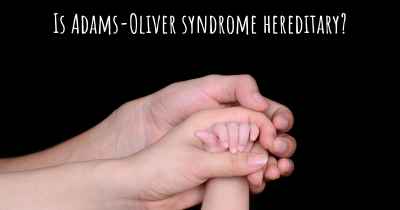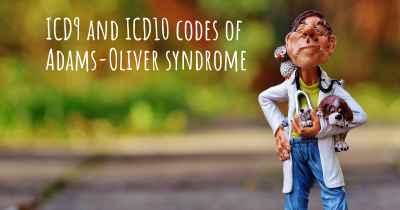What is the history of Adams-Oliver syndrome?
When was Adams-Oliver syndrome discovered? What is the story of this discovery? Was it coincidence or not?

Adams-Oliver syndrome is a rare genetic disorder that primarily affects the development of the skin, limbs, and cardiovascular system. It was first described by British physicians William James Adams and Robert Oliver in 1945. The syndrome is characterized by the presence of two main features: aplasia cutis congenita (ACC) and terminal transverse limb defects (TTLD).
Aplasia cutis congenita refers to the absence of skin at birth, typically on the scalp but can also occur on other parts of the body. The skin lesions can vary in size and depth, ranging from small superficial erosions to large areas of missing skin. In some cases, the underlying bone may also be affected. ACC can lead to complications such as infections, scarring, and impaired thermoregulation.
Terminal transverse limb defects involve the absence or malformation of the distal parts of the limbs, including fingers, toes, or entire hands and feet. These limb abnormalities can vary in severity, ranging from minor nail or digit abnormalities to complete absence of the fingers or toes. Some individuals may also have limb shortening or fusion of bones.
Adams-Oliver syndrome can occur sporadically or be inherited in an autosomal dominant manner, meaning that a person only needs to inherit one copy of the mutated gene from either parent to develop the condition. The syndrome has been associated with mutations in several genes, including ARHGAP31, DOCK6, NOTCH1, and RBPJ. These genes play important roles in embryonic development and vascular formation.
The exact prevalence of Adams-Oliver syndrome is unknown, but it is considered to be a rare condition. It affects both males and females of all ethnic backgrounds. The syndrome may present at birth or become apparent during infancy or early childhood.
Diagnosis of Adams-Oliver syndrome is primarily based on clinical features, including the characteristic skin and limb abnormalities. Genetic testing can be performed to identify mutations in the associated genes, confirming the diagnosis. Prenatal diagnosis is also possible through genetic testing if there is a family history of the syndrome.
Treatment for Adams-Oliver syndrome is focused on managing the specific symptoms and complications associated with the disorder. This may involve surgical interventions to repair or reconstruct the affected areas, such as skin grafting for aplasia cutis congenita or prosthetic devices for limb defects. Regular monitoring and follow-up care are essential to address any potential complications and ensure optimal management.
Adams-Oliver syndrome is a complex disorder, and its underlying mechanisms are not yet fully understood. However, research has provided valuable insights into the genetic basis and developmental pathways involved. Ongoing studies aim to further elucidate the molecular mechanisms and improve our understanding of the syndrome.
In conclusion, Adams-Oliver syndrome is a rare genetic disorder characterized by aplasia cutis congenita and terminal transverse limb defects. It was first described in 1945 and can occur sporadically or be inherited in an autosomal dominant manner. Diagnosis is based on clinical features and genetic testing. Treatment focuses on managing symptoms and complications. Ongoing research continues to enhance our knowledge of this complex syndrome.
Posted Aug 16, 2019 by Amanda 3000
Adams FH, Oliver CP. Hereditary deformities in man due to arrested development. J. Hered. 36: 3-7, 1945.
Whitley CB, Gorlin RJ. Adams-Oliver syndrome revisited. Am. J. Med. Genet. 40: 319-326, 1991.
Posted Feb 6, 2020 by Laura 650
Posted Jan 14, 2023 by Trudy, Steph's mum 2650








